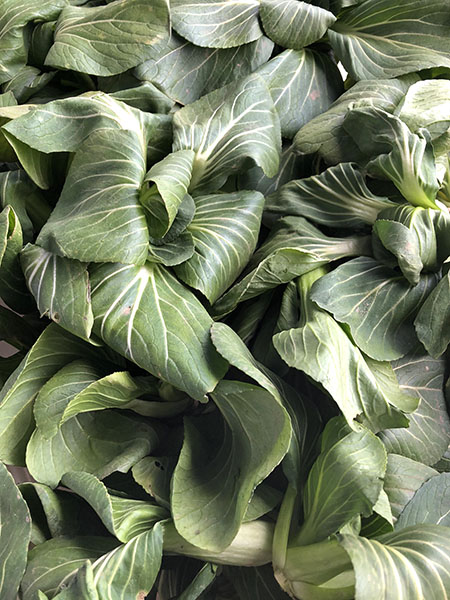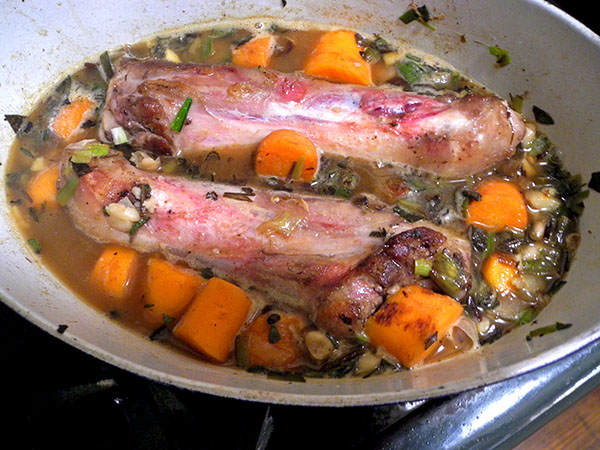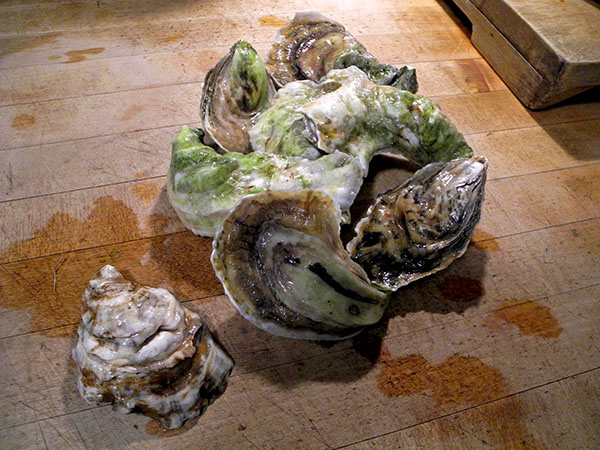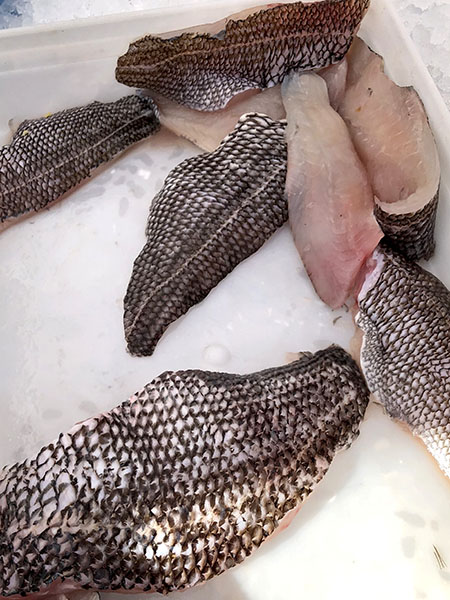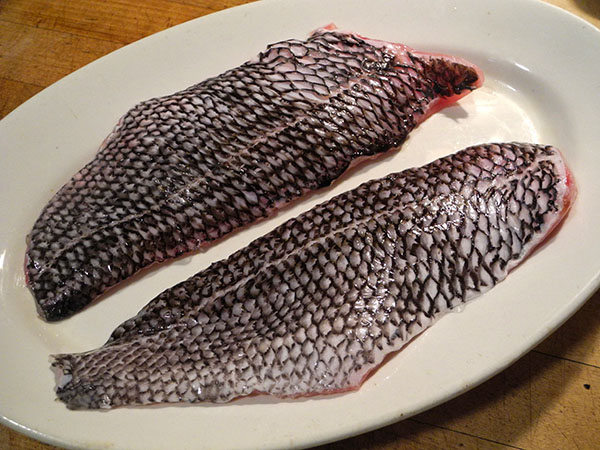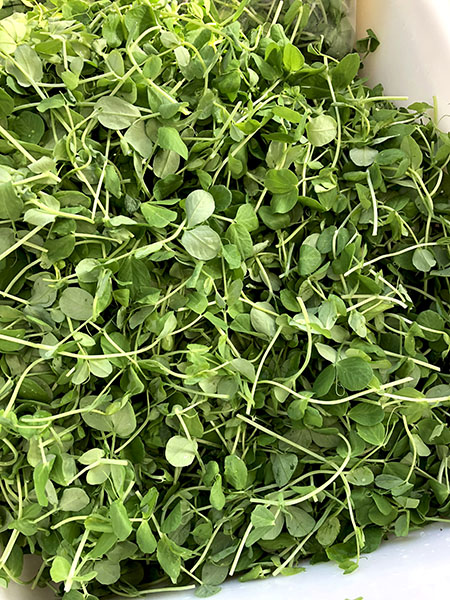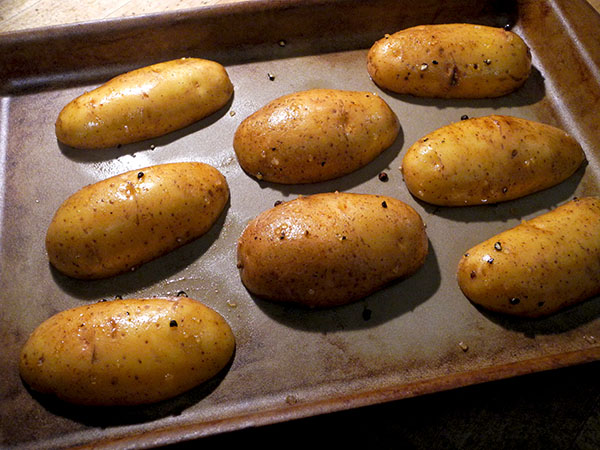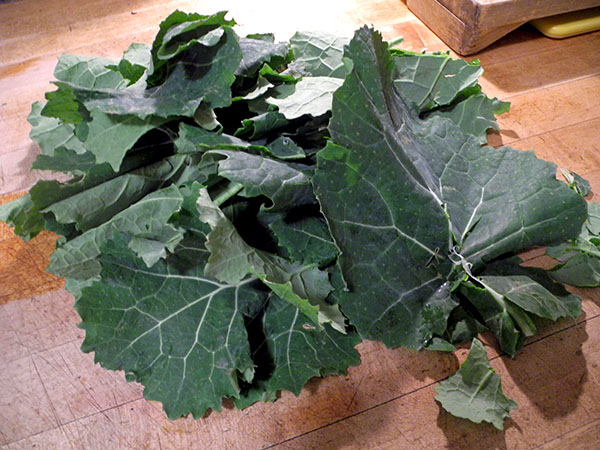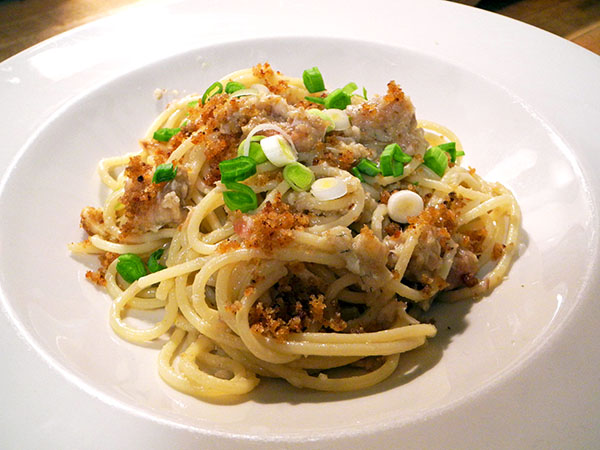
This wonderfully-satisfying pasta dish should be an absolute cinch to put together, once some good fresh smoked eel has been located, but I seem to be married to the original recipe I had found a while back, even if I’ve modified it slightly since, and I still have to pay attention to its instructions and a sequence of the steps that seems not quite intuitive.
By the way, I halved the recipe this time, meaning I decided deliberately not to have leftovers for another day
Still, it really isn’t at all difficult, especially since I didn’t have to go out to some cold shore in early February with my ancient 7-foot Rhode Island eel fork.

- two large cloves of Rocambole garlic Keith’s Farm, sliced thinly, heated in a vintage high-sided, heavy, tin-lined copper pot over a medium-high flame, along with one whole dried pepper Itria-Sirissi chili, peperoncino di Sardegna intero from Buon Italia, until the garlic was almost starting to color, 11 ounces of smoked eel from P.E.& D.D. Seafood in the Union Square Greenmarket, skinned, debonedand broken into small pieces, added and tossed until warmed through, half of some savory pangrattato* prepared only a little earlier mixed in and combined with it, the cooked and drained pasta (8 ounces of Afeltra 100% grano italiano spaghetti, produced in Gragnano, from Eataly Flatiron), added to the pan, tossed with the eel and pangratto and stirred over low heat for a couple of minutes, just under a cup of the reserved pasta water gradually added while doing so, served in low bowls, where the pasta was sprinkled with more pangrattato and finished with chopped Japanese scallions from Norwich Meadows Farm
*For the preparation of the pangrattato about a third of a cup of homemade breadcrumbs were added to about a fourth of a cup of olive oil in which two thinly-sliced Keith’s Farm garlic cloves and 2 large salted anchovies from Buon Italia, rinsed and filleted, had been heated for a short while, then stirred for 4 or 5 minutes, the mixture then drained on paper toweling, bringing it back to room temperature
- the wine was an Italian (Marche) white, La Monacesca Verdicchio di Matelica 2013, from Garnet Wines & Liquors
- the music was Mozart and Da Ponte’s 1786 opera, ‘Le Nozze di Figaro’, John Eliot Gardiner
conducting the English Baroque Soloists and the Monteverdi Choir, with soloists Rodney Gilfry, Susan McCulloch, Carlos Feller, Bryn Terfel, Hillevi Martinpelto, Francis Egerton, Julian Clarkson, Constanze Backes, Lucinda Houghton, Pamela Helen Stephen, Sarah Connolly, and Alison Hagley

